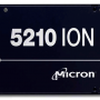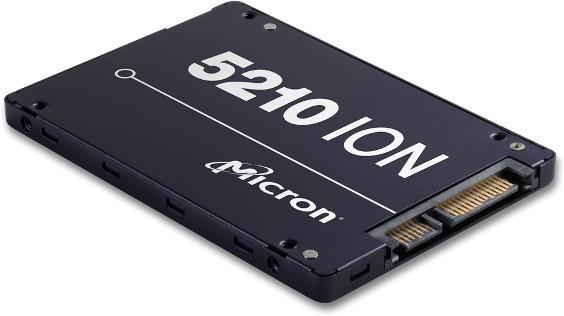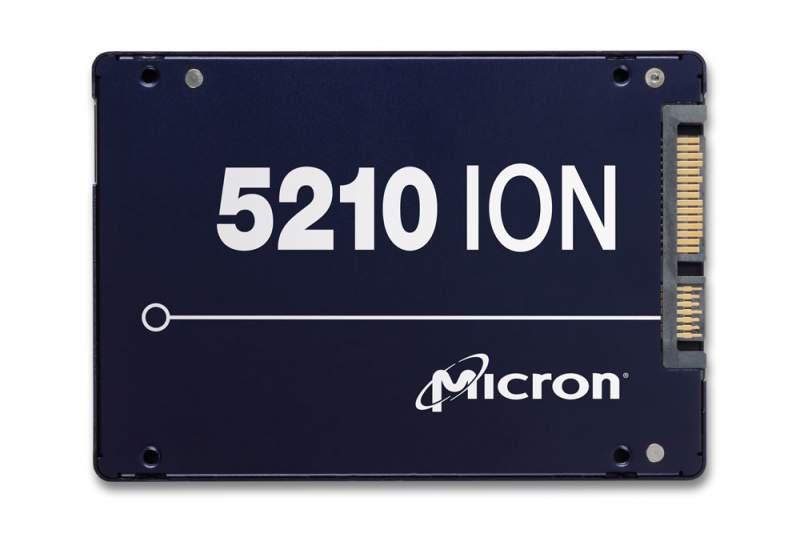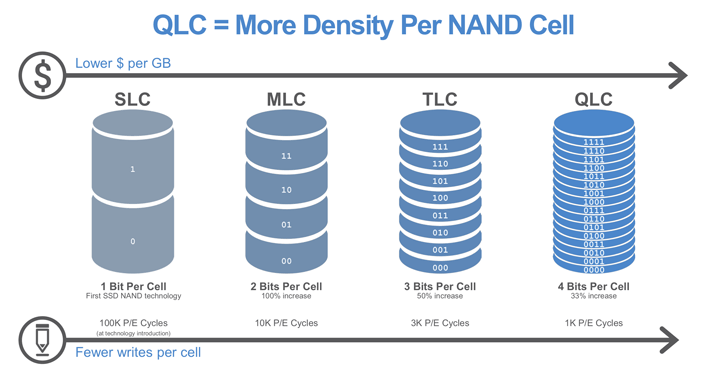Micron announced the shipment of their first 4 bits per cell, or QLC, 3D NAND SSD, the 5210 ION SSD. Leveraging a 64-layer structure, the new 4 bits per cell NAND technology achieves 1 terabit (Tb) density per die.
The new 64-layer 4bits/cell NAND technology enables denser storage in a smaller space, bringing significant cost savings for read-intensive cloud workloads. It is also well-suited for consumer and client computing applications, providing cost-optimized storage solutions and brings in 33 percent more density.
The Micron 5210 ION is a 2.5-inch SSD (7 mm) with capacities starting at 1.92 TB running upwards to 7.68 TB. It is a business SSD series though and the result would be fewer physical drives could be placed into say a server rack so. The SSD has a number of business functions, such as Flex Capacity, allowing write performance and endurance to be tailored for workloads that are still read-intensive, but with a higher mix of write operations.
Micron's 5210 ION SSD is shipping, broader market availability is expected by fall of 2018. Micron is expected to apply its qlc technology to other product series in the consumer market as well.
On 64-layer 4bits/cell NAND technology, we are achieving 33 percent higher array density compared to TLC, which enables us to produce the first commercially available 1 terabit die in the history of semiconductors," said Micron Executive Vice President, Technology Development, Scott DeBoer. "We’re continuing flash technology innovation with our 96-layer structure, condensing even more data into smaller spaces, unlocking the possibilities of workload capability and application construction."
“Commercialization of 1Tb 4bits/cell is a big milestone in NVM history and is made possible by numerous innovations in technology and design that further extend the capability of our Floating Gate 3D NAND technology,” said RV Giridhar, Intel vice president, Non-Volatile Memory Technology Development. “The move to 4bits/cell enables compelling new operating points for density and cost in Datacenter and Client storage.”




